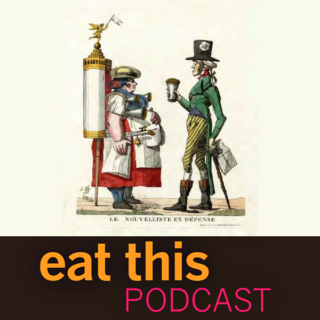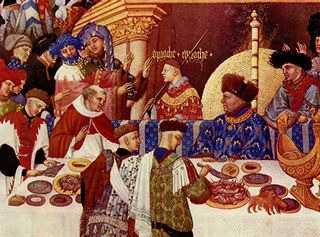15 January 2018
I built up quite a backlog over the holidays, some of which I’m editing out because their moment has passed. Maybe next year I’ll dredge up the history of the potato latke. So let’s get going.
- Something a bit seasonal. What if we let a social scientist who understands human foibles design a tool to promote weight loss? Dan Ariely and his team have done just that.
- Germans apparently lost their taste for kraut? Say it isn’t so! Thanks to the Kraut Braut, they’re reclaiming their birthright.
- I’ve said it before, I’ll say it again: Measuring harvests is hard. Latest case in point, a clash between India’s Ministry of Agriculture and an analyst who cares what people actually ought to eat, according to India’s Institute of Nutrition.
- We all know supermarkets have power over growers. In South Africa, Woolworths’ Farming for the Future program actually prompts farmers to act more sustainably.
- I’m not enamoured of chicken wings myself, but apparently Americans are, and prices have been climbing steadily. As a result of which – and this is the weird bit – “many restaurants boosted menu prices and began offering boneless wings, which are usually chunks of white meat doused in familiar sauces and spices”.
- They’re not food deserts, they’re food swamps. It isn’t a lack of access to fresh food that makes people obese, it’s ease of access to fast food.
 Ask the internet “who invented mayonnaise?” and likely as not you’ll still be told it was a French chef after the battle of Mahon in 1756. Lacking cream, he whipped up an emulsion of egg yolks, oil and vinegar. How that was supposed to substitute for cream, history does not record. But then, history does not record the actual event either. It’s fake news of the finest kind.
Ask the internet “who invented mayonnaise?” and likely as not you’ll still be told it was a French chef after the battle of Mahon in 1756. Lacking cream, he whipped up an emulsion of egg yolks, oil and vinegar. How that was supposed to substitute for cream, history does not record. But then, history does not record the actual event either. It’s fake news of the finest kind.
 Egg is to bacon as orange juice is to coffee. Smoked salmon is to dill as lamb is to asparagus. South Asian is to rice as Southern European is to thyme.
Egg is to bacon as orange juice is to coffee. Smoked salmon is to dill as lamb is to asparagus. South Asian is to rice as Southern European is to thyme. Changes in food fads and fashions are endlessly fascinating. Often, they’re related to status, as technological advances make formerly elite foods available to the masses. And then, of course, the elites have to find new foods to set themselves apart, sometimes adopting with glee foods hoi polloi were only too glad to abandon. That certainly seems to be the case for bread. Where once the whitest, lightest loaves were the preserve of nobility, nowadays the nobles flock to wholewheat, artisanal loaves.
Changes in food fads and fashions are endlessly fascinating. Often, they’re related to status, as technological advances make formerly elite foods available to the masses. And then, of course, the elites have to find new foods to set themselves apart, sometimes adopting with glee foods hoi polloi were only too glad to abandon. That certainly seems to be the case for bread. Where once the whitest, lightest loaves were the preserve of nobility, nowadays the nobles flock to wholewheat, artisanal loaves.